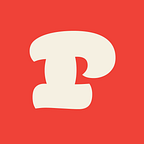Typeface as the ultimate branding tool
For the past couple of years, we’ve been using our client projects as good excuses to experiment and improve our type design work. Things started simple, with us generating hand lettered logotypes and half expecting to start some new type families from these multiple studies. Our latest retail font release Tenez is a good example, stemming directly from a word mark we designed for Coralinda, a small shoe store in the countryside of Goiás.
As most of our business come from small/medium clients, most of them don’t have the budget nor need their own exclusive typeface. But more and more we’re finding uses for type design that go beyond having an exclusive typeface or a particular look for their brand.
The thing about designing brands is that we’re always afraid of how a brand will be implemented in real life and sometimes if it is going to be properly implemented at all. This, of course, is partly our responsibility. But once our work goes to the hands of our clients it is a bit nerve wrecking to see how the brand develops over time. How to address that? Guidelines are okay but sometimes lack some flexibility in embracing changes and improvements over time. We need tools, basic structures that make it easy for the client’s team to bring the brand to life smoothly and simply.
Turns out typefaces are just that, flexible tools that you can create and customize to perform specific tasks in the reality of this and that client.
Our first ever realization of this came when our typeface Motiva Sans was chosen by Valve to be the typeface for Steam and Steam OS. We were asked to design emojis for the typeface so they could use it on their chat feature. Having the icons in the same place as the font wasn’t a new idea, but made complete sense and that stuck in my mind for other potential projects and made me question what other roles could fonts play in branding projects.
We started experimenting with it with Eliezer Max, a school in Rio for which we created a set of tools for their design team — led by the excellent Mariana Ochs — to implement. It was the first time for us in which we did not create a set of closed files for the client to access and use rigidly. It was liberating and made us think harder on how this approach could work for other clients of ours.
For them we created a set of grids, parameters for type setting (nothing out of the ordinary, just organized and easy to implement) and a custom titling font with layers that could be used together or separately for unity or diversity depending on context. For their many events, special occasions and applications, it made total sense. With a team of knowledgeable designers it didn’t represent a huge technical barrier to implement as well.
Then came Dariquim, one of our current clients. They are a team of three people traveling periodically to Minas Gerais to find the best Canastra Cheese and bringing it to a cosmopolitan clientele craving for the tastes of the countryside. They have little time to do all the chores involved in marketing, packaging and delivering their products to the clients. They are still small and dynamic in a way that it’s not feasible nor cost effective for them to have a design team to manage their identity for now.
So what we’re doing is setting up their basic identity supported by a custom typeface, in which we’re incorporating interesting features like our Queijim® OpenType feature. It works like this: Dariquim sells premium cheese by the portion, half, quarter, three-quarters, full. They need to communicate that in fairs and events they go to, so why not include a feature in which typing 1/2 generates the actual illustration of a half-cheese instead, making it simple and fun to create signage and ubiquitous applications such as posts on social media.
This is not exactly ground-breaking stuff. The insight came originally from SymbolSet fonts and other interesting web font services for icons and the such, in which typing things like Facebook generated a Facebook icon if the ligatures were activated and so on.
It’s taking this concept to build features specific to the clients that feels fresh, is relatively easy to implement and may be one of the possible ways to ensure a more systematic usage of the brand system in real life. Secretly it’s also a lot of fun for us too.
Whether this approach will yield better managed brands by our clients is still in contention. But it surely is rewarding to use this kind of approach to keep ourselves uncomfortable and on the tip of our type and design toes.
